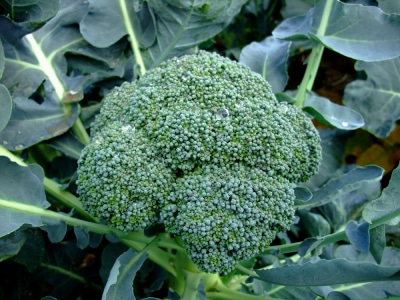 Healthy Cruciferous Vegetables
Healthy Cruciferous Vegetables
Cruciferous vegetables are among the healthiest vegetables we can eat. Saying “healthy cruciferous vegetables” is somewhat redundant. These vegetables are rich in vitamins, minerals, phytochemicals, and fiber. The pungent aroma and spicy taste of cruciferous vegetables are the result of sulfur-containing compounds called glucosinolates.
The Names of Cruciferous Vegetables
There is no shortage of cruciferous vegetables to choose from. Arugula, broccoli, Brussel sprouts, bok choy, cabbage, cauliflower, collard greens, horseradish, kale, mustard, radish, turnips, wasabi, and watercress are examples of cruciferous vegetables.
What Makes Cruciferous Vegetables Healthy?
Cruciferous vegetables are rich in antioxidants that limit tissue damage that leads to inflammation and cancer. In one study oxidative stress was reduced by 22% after increased consumption of cruciferous vegetables. Inflammation contributes to many chronic diseases like heart disease, and cancer remains the second leading cause of death in the US next to heart disease.
Higher intakes of cruciferous vegetables have been associated with lower risks of cancer, especially lung and colon cancer. Some studies show lower rates of prostate, breast, and endometrial cancers with higher consumption of cruciferous vegetables.
These healthy vegetables contain compounds that detoxify or neutralize carcinogens (cancer-causing compounds) before they damage healthy normal cells. These compounds include sulforaphane, indole-3-carbinol, and crambene.
The breakdown products of glucosinolates like indole-3-carbinol inhibit the development of hormone-sensitive cancers through their effects on the metabolism of estrogen. Estrogen can be metabolized into 16 alpha-hydroxy estrone or 2 hydroxy estrone. 16 alpha-hydroxyesterone is carcinogenic. Compounds like indole-3-carbinol favor metabolism into non-carcinogenic 2 hydroxyesterone.
Cruciferous vegetables helps to improve the production of nitric oxide. Nitric oxide improves vascular function, enhances the immune system, and improves neural cell to cell communication.
Tips for Cooking Cruciferous Vegetables
Cruciferous vegetables are best eaten raw or lightly steamed. Cooking at too high of temperature destroys the beneficial phytochemicals found in them. Overcooking can also produce the strong sulfur smell that many find unappealing.
They can be added to green salads, soups, stews, and casseroles for those who prefer not eat them alone.
There are no current recommendations on how many servings of cruciferous vegetables should be consumed in a day or week. In animal studies consumption of too much cruciferous vegetables can lead to low thyroid function but that has not been shown in any human studies, though there have been case reports of humans developing low thyroid after consumption of excessive amounts of these vegetables.
See related articles.
Low-Calorie Food For Weight Loss
